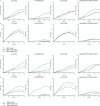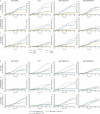Positive selection of efficient ethanol producers from xylose at 45 °C in the yeast Ogataea polymorpha
- PMID: 40691245
- PMCID: PMC12280177
- DOI: 10.1038/s41598-025-12204-2
Positive selection of efficient ethanol producers from xylose at 45 °C in the yeast Ogataea polymorpha
Abstract
This research presents a method for the positive selection of mutants with improved xylose and L-arabinose fermentation in the thermotolerant, naturally xylose-utilizing yeast Ogataea polymorpha which is based on isolation of the mutants growing on L-arabinose as sole carbon and energy source. Whole-genome sequencing of the most efficient xylose-fermenting strain, A107, revealed mutations in the API1 and IRA1 genes, which are homologous to bacterial arabinose-5-phosphate isomerase and the Ras-GTPase activating domain in Saccharomyces cerevisiae, respectively. Disruption of the IRA1 gene increased ethanol production during the fermentation of xylose and L-arabinose in O. polymorpha at 45 °C. Overexpression of the API1 gene specifically enhanced L-arabinose fermentation without affecting xylose fermentation. The most productive mutant strain accumulated 20.91 g/L of ethanol in a xylose-containing medium at 45 °C, exceeding the ethanol accumulation level of the wild-type strain (0.40 g/L) by over 50 times. This strain holds potential for application in simultaneous saccharification and fermentation (SSF) processes.
Keywords: API1 gene; IRA1 gene; Alcoholic fermentation; L-arabinose; Reverse genetics.
© 2025. The Author(s).
Conflict of interest statement
Declarations. Competing interests: The authors declare no competing interests.
Figures






Similar articles
-
Recent progress in engineering yeast producers of cellulosic ethanol.FEMS Yeast Res. 2025 Jan 30;25:foaf035. doi: 10.1093/femsyr/foaf035. FEMS Yeast Res. 2025. PMID: 40613832 Free PMC article. Review.
-
Transcriptional activator Cat8 is involved in regulation of xylose alcoholic fermentation in the thermotolerant yeast Ogataea (Hansenula) polymorpha.Microb Cell Fact. 2017 Feb 28;16(1):36. doi: 10.1186/s12934-017-0652-6. Microb Cell Fact. 2017. PMID: 28245828 Free PMC article.
-
Enzymatic Hydrolysis of Soybean Hull Without Pretreatment and Its Enhancement of Bioethanol Production Using Xylose-Fermenting Escherichia coli (FBR5).Front Biosci (Elite Ed). 2025 Jun 23;17(2):38126. doi: 10.31083/FBE38126. Front Biosci (Elite Ed). 2025. PMID: 40613141
-
The role of hexose transporter-like sensor hxs1 and transcription activator involved in carbohydrate sensing azf1 in xylose and glucose fermentation in the thermotolerant yeast Ogataea polymorpha.Microb Cell Fact. 2022 Aug 13;21(1):162. doi: 10.1186/s12934-022-01889-z. Microb Cell Fact. 2022. PMID: 35964033 Free PMC article.
-
Development and application of co-culture for ethanol production by co-fermentation of glucose and xylose: a systematic review.J Ind Microbiol Biotechnol. 2011 May;38(5):581-97. doi: 10.1007/s10295-010-0894-3. Epub 2010 Nov 23. J Ind Microbiol Biotechnol. 2011. PMID: 21104106
References
-
- Devi, A., Singh, A., Pant, D. & Sheikh, Z. Ethanol from lignocellulosic biomass: An in-depth analysis of pre-treatment methods, fermentation approaches and detoxification processes. J. Environ. Chem. Eng.9, 105798 (2021).
-
- Su, T., Zhao, D., Khodadadi, M. & Len, C. Lignocellulosic biomass for bioethanol: Recent advances, technology trends and barriers to industrial development. Curr. Opin. Green Sustain. Chem.24, 56–60 (2020).
-
- Abdel-Banat, B. M., Hoshida, H., Ano, A., Nonklang, S. & Akada, R. High-temperature fermentation: How can processes for ethanol production at high temperatures become superior to the traditional process using mesophilic yeast?. Appl. Microbiol. Biotechnol.85, 861–867 (2010). - PubMed
MeSH terms
Substances
Grants and funding
LinkOut - more resources
Full Text Sources
Miscellaneous

